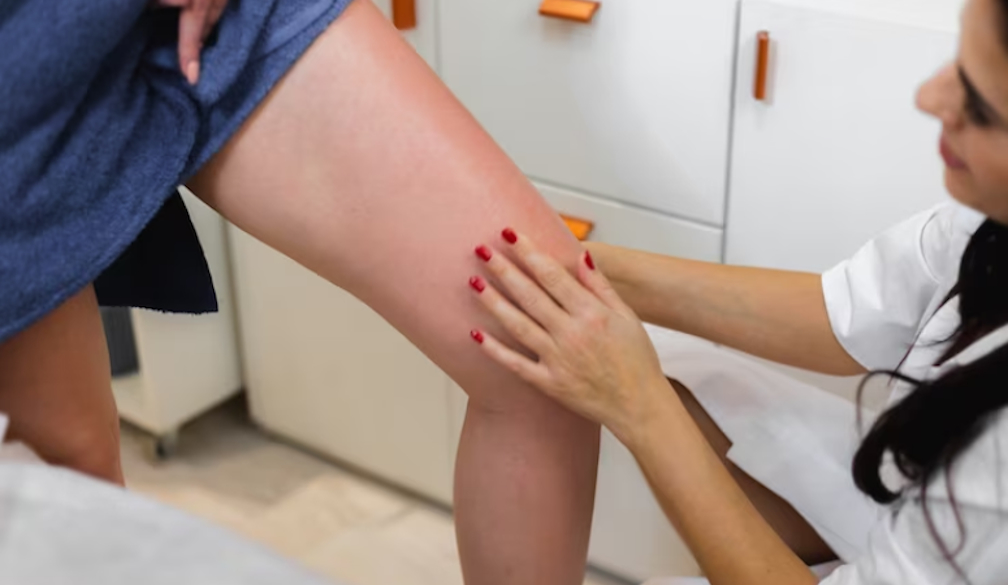Tips for Successful Varicose Vein Removal with Ambulatory Phlebectomy

Introduction to Varicose Veins and Ambulatory Phlebectomy
Varicose veins, characterised by their enlarged, swollen, and twisted appearance, typically manifest in the legs and feet. They develop as a result of weakened or malfunctioning valves within the veins, which cause blood to accumulate and the veins to protrude. This condition often brings about symptoms such as pain, heaviness, swelling, and itching, impacting individuals' daily lives.
In addressing varicose veins, ambulatory phlebectomy emerges as a minimally invasive surgical solution, also referred to as microphlebectomy or stab avulsion. Diverging from the conventional approach of vein stripping, ambulatory phlebectomy involves the precise creation of small incisions along the afflicted veins. Through these minute openings, the targeted veins are meticulously extracted, offering patients a streamlined procedure with reduced recovery times and minimal scarring. This innovative technique not only effectively removes varicose veins but also promotes enhanced patient comfort and satisfaction throughout the treatment process.
Understanding Varicose Veins
Varicose veins, a common vascular condition, can manifest due to a variety of factors including genetic predisposition, pregnancy, obesity, prolonged periods of standing or sitting, and advancing age. Though they may primarily present as a cosmetic concern for some individuals, others endure notable discomfort and complications such as blood clots or skin ulcers. This underscores the importance of addressing varicose veins not only for aesthetic reasons but also to mitigate potential health risks and improve overall well-being. For individuals seeking varicose vein removal in Sydney, it's essential to consider comprehensive treatment options that address both the cosmetic and medical aspects of this condition.
What is Ambulatory Phlebectomy?
Ambulatory phlebectomy stands as a reliable and efficient outpatient procedure administered under local anaesthesia, ensuring both safety and effectiveness. This innovative method facilitates the meticulous extraction of varicose veins, thereby reducing scarring and expediting the recovery period. Throughout the procedure, skilled surgeons employ specialised instruments to eliminate the afflicted veins through small punctures in the skin, ensuring both precision and minimal invasiveness.
Advantages of Ambulatory Phlebectomy
Ambulatory phlebectomy offers several advantages over traditional vein stripping, including:
- Minimally invasive: The procedure requires only small incisions, resulting in less trauma to surrounding tissues.
- Quick recovery: Most patients can resume normal activities within a few days to a week after the procedure.
- Excellent cosmetic results: The tiny incisions made during ambulatory phlebectomy typically heal well and leave minimal scarring.
- High success rate: Ambulatory phlebectomy effectively removes varicose veins and reduces the risk of recurrence.
Who is a Suitable Candidate for Ambulatory Phlebectomy?
Ambulatory phlebectomy stands as an ideal option for individuals grappling with symptomatic varicose veins, especially those who have found traditional remedies like compression stockings or lifestyle adjustments ineffective. Before proceeding with ambulatory phlebectomy, it is imperative for potential candidates to undergo a comprehensive assessment conducted by a vascular specialist. This evaluation aims to ascertain the suitability of the individual for the procedure, taking into account various factors such as overall health status, medical history, severity of symptoms, and the presence of any underlying conditions. By undergoing this thorough evaluation process, patients can ensure that they receive personalised care tailored to their specific needs and circumstances, ultimately optimising the outcomes of the ambulatory phlebectomy procedure.
Preparing for the Procedure
Before undergoing ambulatory phlebectomy, patients may need to undergo a comprehensive evaluation, including a physical examination, ultrasound imaging, and medical history review. It is essential to follow any preoperative instructions provided by the surgeon, such as avoiding certain medications or fasting before the procedure.
The Procedure Step by Step
Anaesthesia
Ambulatory phlebectomy is typically performed under local anaesthesia, which numbs the treatment area and minimises discomfort during the procedure. In some cases, patients may receive sedation to help them relax during the surgery.
Incision and Vein Removal
Once the anaesthesia has taken effect, the surgeon makes small incisions, usually less than a quarter-inch in length, along the path of the varicose veins. Special hooks or forceps are then used to grasp and remove the diseased veins piece by piece.
Closure of Incisions
After all targeted veins have been removed, the incisions are closed with tiny steri-strips or sutures. Compression bandages or stockings may be applied to support the healing process and reduce swelling.
Recovery Process and Aftercare
Following ambulatory phlebectomy, patients are usually able to return home the same day. It is essential to follow postoperative instructions provided by the surgeon carefully. This may include wearing compression garments, avoiding strenuous activities, and keeping the legs elevated to reduce swelling.
Managing Discomfort and Potential Complications
While ambulatory phlebectomy is generally well-tolerated, some patients may experience mild discomfort, bruising, or swelling after the procedure. Pain medications and cold compresses can help alleviate these symptoms. In rare cases, complications such as infection or nerve injury may occur, but they are uncommon when the procedure is performed by an experienced surgeon.
Results and Expected Outcomes
Many patients experience immediate relief from symptoms such as pain and swelling after ambulatory phlebectomy. Over time, the treated veins fade and become less noticeable, improving the appearance of the legs. While results may vary, most individuals achieve long-lasting benefits from the procedure.
Lifestyle Changes for Maintaining Vein Health
To prevent varicose veins from recurring and promote overall vein health, patients are encouraged to:
- Maintain a healthy weight
- Stay physically active
- Elevate the legs when resting
- Avoid prolonged periods of standing or sitting
- Wear compression stockings as recommended
- Follow a balanced diet rich in fibre and nutrients
Conclusion
Ambulatory phlebectomy is a safe and effective treatment option for removing varicose veins and improving symptoms and appearance. By understanding the procedure and following postoperative instructions, patients can achieve successful outcomes and enjoy long-term vein health.

















